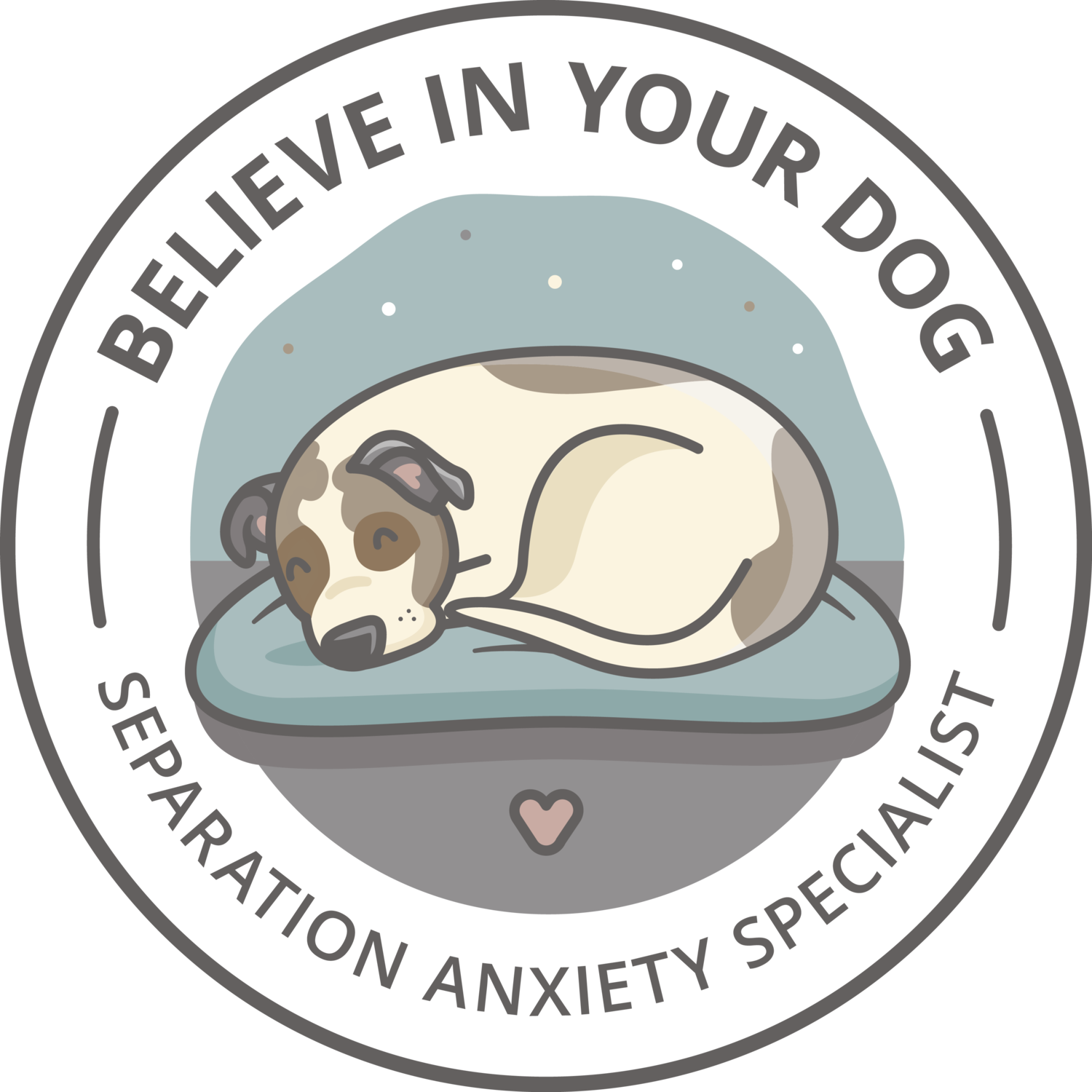Achieve Your Separation Anxiety Training Goals Using a Tiered Framework
As my clients prepare for a return to the office, their separation anxiety training goals become loftier. During the peak of the pandemic, their objectives were more attainable; they wanted to do simple things like take out the trash or check the mail. Behavior is expensive, after all, and we humans tend to match our behavior with the least restrictive intervention. So when “leaving the house” meant simply being outside its walls, owners of separation anxiety dogs were content with micro-goals that allowed them to carry on with their days.
But days are starting to look different, and that means that goals are shifting, too. For many, “leaving the house” now means being gone for 8 hours 5 days a week. And it should come as no surprise that a goal like that will take much longer to achieve than it would to water the plants.
Imagine if you decided to train for a marathon. If you had no running experience, you probably wouldn’t expect to complete the Boston Marathon in a few weeks. Instead, you’d set smaller micro-goals to achieve as you build up to the end goal. This type of tiered framework is exactly how I urge my clients to set goals.
The “Tiered Goal” Framework
I understand that most of my clients ultimately need to live normal lives. Many need to work 8-hour days away from home and they need to do that most days of the week. I’m not suggesting that any of them give up that goal. Instead, I’m encouraging them to set up tiers of milestones along the way that help them get to that ultimate goal.
Tier 1: Long-Range Goal
Here’s where you get to dream big. This would be the equivalent of running the Boston Marathon. In an ideal world, how long does your dog need to be comfortable being alone? If you work a standard 9-5 office job and the commute makes it hard for you to come home mid-day, your goal might look like this:
After 12 months of training, I would like my dog to be comfortable when left home alone from 8:30am - 5:30pm Monday through Friday. I will hire a dog walker to come to the house and take him for a walk at lunch time, and I am open to the use of medication to help my dog learn that alone-time is safe.
It’s important that your big-picture goal is specific, realistic and measurable. Can you see the difference between the goal above and a vague statement like, “I want my dog to stop freaking out when I leave the house”?
Tier 2: Mid-Range Goals
Your mid-range goals are where you break your long-range goal into manageable chunks. You can expect to spend a few months working to achieve these milestones, though that isn’t carved in stone. It could take longer; it could go more quickly. With separation anxiety training, your dog sets the pace.
Realistic mid-term goals include things like taking a neighborhood walk, going for a quick coffee, or picking up some takeout. Achieving these milestones may seem small, but they really do wonders in helping my clients feel like they’re no longer prisoners in their homes. They also give them a glimpse of what their dog is capable of and provide hope for the future.
Tier 3: Short-Range Goals
Now we’re down to the least sexy tier: the short-range goals. They aren’t sexy because they can feel insignificant in the grand scheme of things and they don’t do much in terms of providing immediate relief for guardians. But they really are the most important because they lay the foundation for all the work that’s to come. If you get these goals right, you’ll be on a much smoother road to the finish line.
Realistic short term goals are things like walking away from the front door, touching the door knob, and possibly walking to the end of the driveway. These micro-steps are the equivalent of running for 1 minute if you’re training for that marathon–absolutely crucial for success, but not life-changing in the immediate moment.
Assessing Your Goals
With separation anxiety training, our goals also need to be fluid. Sometimes you will blow past the goals you set with ease and sometimes it will be challenging to make progress. We need to get comfortable with taking a step back, re-evaluating our goals and either re-committing to them or adjusting them.
Final Thoughts
Setting goals in a tiered framework gives my clients and their dogs little “wins” to build upon in what can be a complex process. Each time they get out the door without their dogs experiencing distress, it’s a win. And they are that much closer to reaching the next tier in the framework.
I strive to be as transparent as possible with my clients. I would never want them to think that separation anxiety is a quick fix and then be disappointed when reality sets in. They might lose sight of the path along the way, but it won’t be because I didn’t do my job in helping them set realistic goals. As long as they are willing to do that and meet their dogs where they are, we will get there.


